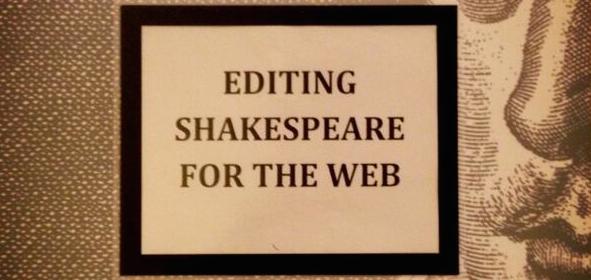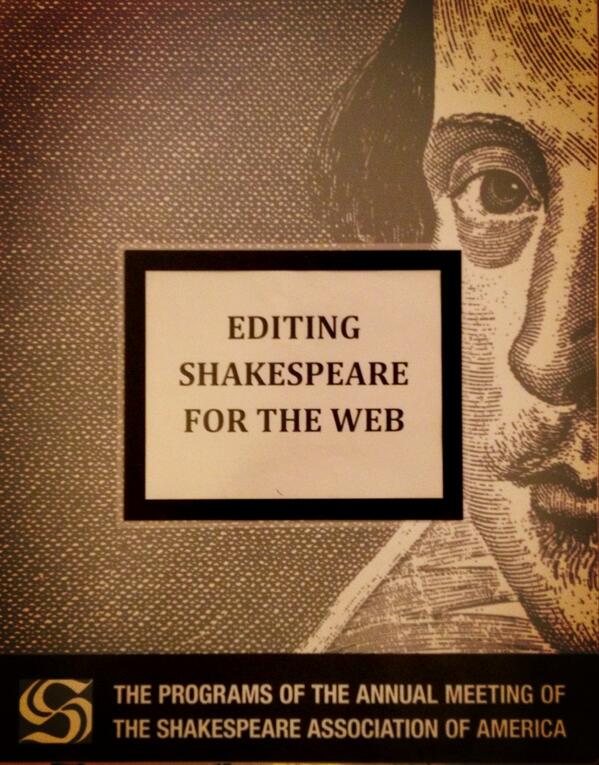Editing Shakespeare for the Web

This post originally appeared in Upstart: Essays and Conversations About Early Modern English Studies, on March 29, 2013.
 Early Thursday morning—okay not that early, but the coffee hadn’t quite permeated my system, yet—I sat in as an auditor on Jeremy Ehrlich’s workshop on “Editing Shakespeare for the Web.” Happily for me, there were several familiar faces as participants and auditors; overall, it was a good turnout for the first session of the conference. Ehrlich began by explaining that the participants had all submitted rationale for and samples of editorial projects. As members of the workshop briefly presented their proposals, there arose repetition in questions, dilemmas, and potential sights of convergence in the aims.
Early Thursday morning—okay not that early, but the coffee hadn’t quite permeated my system, yet—I sat in as an auditor on Jeremy Ehrlich’s workshop on “Editing Shakespeare for the Web.” Happily for me, there were several familiar faces as participants and auditors; overall, it was a good turnout for the first session of the conference. Ehrlich began by explaining that the participants had all submitted rationale for and samples of editorial projects. As members of the workshop briefly presented their proposals, there arose repetition in questions, dilemmas, and potential sights of convergence in the aims.
For anyone acquainted with discussions of digital humanities projects, instructional technology, or the development of digital tools, the broad themes were all too familiar: Who is your audience? How do you create an interface that doesn’t scare away readers, but also encourages deeper involvement? How do you cater to both the superficial and inquisitive reader? How do structure your data in an intelligent way so that it can produce multiple layers of information from the data set? How do you document your work so that it can be reproduced going forward? How do you avoid technologies that are already almost obsolete? How do you make a curated scholarly repository that is also aesthetically pleasing and easy to navigate? Similarly, how do we teach scholars—who we need to do the research and who we understand as one of our primary audiences—information architecture and tagging? When do we acknowledge that there is value and tremendous labor in tagging, coding, and transforming the research into a viable product? Can we finally admit that visualizations are vital to our work as scholars and an integral part in how we engage online? Where do we as editors reach for the theoretical support for the work that we’re doing? How do we balance the problem of not wanting to re-learn how to read every time we encounter a new online edition or tool with the reality that our approaches are different? And when can we move away from insisting that online content must easily be exported to a printable form?
The last question might be mine. I understand the need to share a text that has been annotated and framed in a specific way, but in limiting online editions to ones that can be readily transferred to print, I think you miss out on the variety of data, forms, and malleability that we gain in moving from the printed page to the digital. In this light, the exciting take-aways for me on this panel were the discussions of how various projects might work together—Map of Early Modern London and Internet Shakespeare Editions—to form robust and visually engaging texts; and the collaborative possibilities for scholars, students, and theatrical practitioners with tools such as Open Source Shakespeare‘sMarginalia prototype. While the workshop may not have answered all of the questions posed and while we may come to these projects with various knowledge bases and outcomes in mind, the progress being made and the possibilities that lie ahead provide promise for the future of editing.

 orcid.org/0000-0002-8402-9892
orcid.org/0000-0002-8402-9892